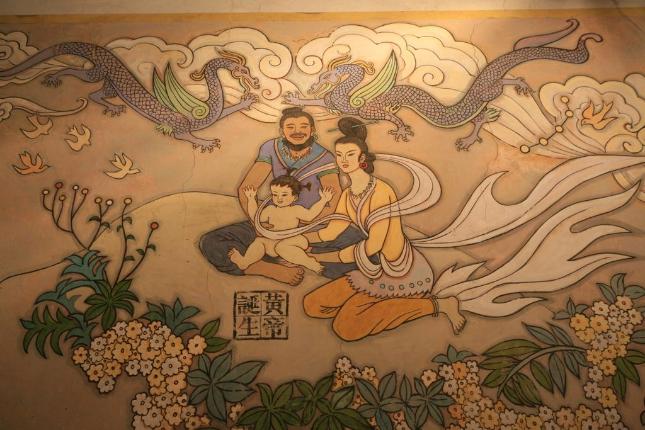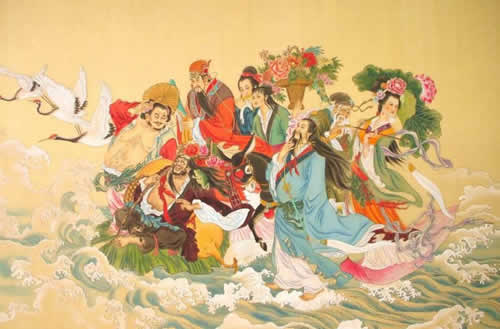Ancient Chinese Mythology
3 min readChinese mythology is a collection of cultural history,folktales,and religions that have been passed down in oral or written traditions.These include creation myths and legends and myths concerning the founding of Chinese culture and the Chinese State.Like many mythologies,it has in the past been believed to be,at least in part,a factual recording of history.

Historians have conjectured that the Chinese mythology began in the 12th century BC.The myths and legends were passed down in oral form for over a thousand years,before being written in books such as Shan Hai Jing.Other myths continued to be passed down through oral traditions like theater and song,before being recorded as novels such as Hei’an Zhuan-Epic of the Darkness(literally Epic of the Darkness). This collection of epic legends is preserved by a community of Chinese Han nationality,inhabitants of the Shennongjia mountain area in Hubei,and contains accounts from the birth of Pangu up to the historical era.

Imperial historical documents and philosophical canons such as Shangshu,Shiji,Liji,Lushi Chunqiu,and others,all contain Chinese myths.
Some myths survive in theatrical or literary formats,as plays or novels.Important mythological fictions which are seen as definitive records of these myths include.
Verse poetry of ancient states such as Lisao by Qu Yuan of the Chu state .
Fengshen Yanyi,or Anointing of the Gods,a mythological fiction dealing with the founding of the Zhou dynasty.

Journey to the West,written by Wu Cheng’en and published in the 1590s,is a fictionalised account of the pilgrimage of Xuanzang to India to obtain Buddhist religious texts,in which the pilgrims encounter ghosts,monsters,and demons as well as the Flaming Mountains.
Baishe Zhuan,a romantic tale set in Hangzhou,involves a female snake who attained human form and fell in love with a man.
Nüwa and Fuxi are often represented as half-snake,half-human creatures.Shangdi, appears in literature probably earlier than 700 BC as Huangtian Dadi,very occasionally as Huangtian Shangdi,(the dating of these occurrences depends on the date of Oracle Bones and the Shujing,aka”Book of Documents”).When Huangtian Dadi was used,it refers to Jade Emperor or Yu Huang,and Tian and Jade Emperor were synonymous to Chinese prayers.
Yu Di(yuhuang or yudi or Jade Emperor)appears in literature after the establishment of Taoism in China,but the position of Yu Huang dates back to beyond the times of Huangdi, Nuwa or Fuxi.
Tian(or Heaven)appears in literature probably about 700 BC,or earlier(the dating of these occurrences depends on the date of the Shujing,aka”Book of Documents”).There are no”creation”-oriented narratives for”Heaven”,although the role of a creator is a possible interpreatation.The qualities of”Heaven”and Shangdi appear to merge in later literature(and are worshiped as one entity(“huangtianshangdi”)in,for example,the Temple of Heaven in Beijing).The extent of the distinction(if any)between them is debated.The sinologist Herrlee Creel proposes that an analysis of the Shang oracle bones shows that Shangdi preceded”Tian”as a deity,and that Zhou Dynasty authors replaced the term Shangdi with Tian to cement the claim of their influence.
Nüwa appears in literature no earlier than about 350 BC.Her companion was Huxi ,the brother and husband of Nüwa.These two beings are sometimes worshiped as the ulumate ancestor of all humankind.People sometimes believe that Nüiwa molded humans from clay for companionship.They are often represented as half-snake,half-human creatures.Nuwa was also responsible for repairing the sky after Gong Gong damaged the pillar supporting the heavens.
Pangu,written about 200 AD by the Taoist author Xu Zheng,was a later myth claiming to describe the first creator of sentient beings.








